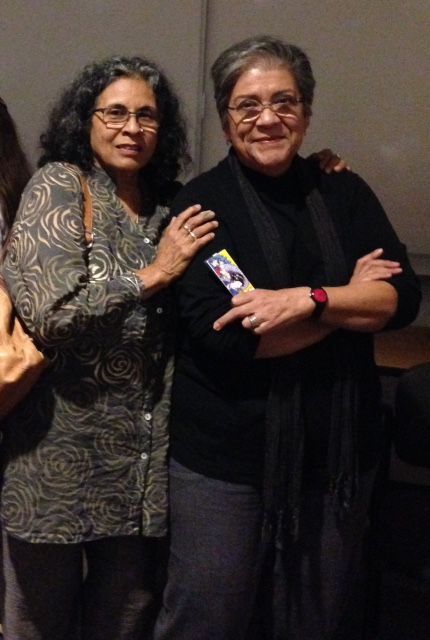Chicana artists visit Sac State to define culture with art
October 15, 2014
From prints to graffiti to pastel artwork, Judithe Hernandez and Ester Hernandez stand the test of time in the Chicana art profession.
On Oct. 8, Sacramento State’s Art Department hosted the artists and Tere Romo, a program advisor for arts and culture at the San Fransisco Foundation, to speak to students and the general public.
The artists spoke about their favorite art pieces and what inspired them.
Judithe, a Los Angeles native said her mother was her inspiration and supported the idea of her going into art.
Judithe’s art started getting recognized in the 1970s for her mural work in Los Angeles.
“In 2012 I won the C.O.L.A. Fellowship (City of Los Angeles Individual Artist Fellowship) in L.A.,” said Judithe.
Judithe shared with the audience that she will be creating public art for the Metro Expo Line Terminus Station at Colorado & 4th Street in Santa Monica by the Metropolitan Transportation Authority in Los Angeles.
KCET, a Southern California’s local TV station, wrote in 2013 the Downtown Santa Monica station is scheduled to be open in 2016 and is currently under construction.
The station will feature 24 works by Judithe positioned over its two passenger platforms and a sculpture installation at the plaza level.
The artists also discussed how Chicana art is different compared to other art because it expresses humor, love, empowerment and immigration all through one or many different paintings.
“A big influence for me was my family and community. In the 1st grade, I had my first art show,” San Francisco native, Ester said.
For example, Ester spoke about a painting of her granddaughter she created.
It is comprised of her granddaughter surrounded by the icons of different ethnicities she embodies.
“She is half Japanese, half Chicana, a little bit of everything,” said Ester.
Her granddaughter was born in Japan and in the picture she is wearing a kimono, but the images around her represent her other heritages.
Ester’s most popular artwork is the “Sun Mad” print that is censored by California’s agribusiness.
Ester explains that the print shows the deadly impact of pesticides on farm workers, consumers and the environment.
“Ester was a big influence for me. I have a print that is directly related to Ester’s ‘Sun Mad’ print. It shows a Mexican Farmer in the field and it says underneath, ‘Farmer Juan Exploited Since 1848,’” said Manuel Rios, part-time art professor.
Rios also mentions that it is a parody on the Farmer John Sausage packages.
“[The] Chicana speakers are enjoyable and comforting. They did not disappoint,” said Rios.
The Crocker Art Museum’s exhibition titled, “Our America: The Latino Presence in American Art,” will be showing through Jan. 11.
More than 100 art pieces, including pieces from both Ester and Judithe, will explore the main theme that this country is a “nation of immigrants” by looking at the contributions of Latino artists to American art and culture.























































































































